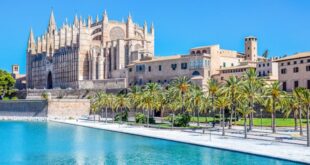Last Updated on January 17, 2024
The term ‘cabeza’ may not be familiar to everyone, but it holds a significant place in various contexts. Understanding the etymology, cultural significance, anatomy, nutritional value, and cooking methods associated with cabeza can provide a deeper insight into this intriguing topic. Let’s dive in and explore what cabeza truly encompasses.
Understanding the Term ‘Cabeza’
The word ‘cabeza’ originates from the Spanish language, where it translates to ‘head’ in English. However, its meaning goes beyond a mere anatomical reference. Cabeza is often used metaphorically to represent leadership, intelligence, and wisdom. It symbolizes the core of something, the central figure or idea.
When we delve into the cultural and linguistic significance of ‘cabeza,’ we uncover a fascinating journey through time and across languages. Let’s explore the etymology of this intriguing term and dispel some common misconceptions.
The Etymology of ‘Cabeza’
The term ‘cabeza’ has its roots in Latin, where ‘caput’ signifies ‘head.’ Through centuries of linguistic evolution, the word transformed into ‘cabeza’ in Spanish. This linguistic evolution is a testament to the fluidity and adaptability of language as it evolves over time.
Interestingly, ‘cabeza’ shares a linguistic connection with other Romance language equivalents. In French, ‘cap’ is used to refer to the head, while in Italian, ‘capo’ carries a similar meaning. These linguistic connections highlight the interconnectedness of cultures and languages within the Romance language family.
Common Misconceptions about ‘Cabeza’
Despite the rich cultural and culinary heritage associated with cabeza, certain misconceptions often arise. One prevalent misunderstanding is that cabeza exclusively refers to the head of an animal. While this is a common usage, cabeza can also encompass other meanings and contexts beyond the domain of animal anatomy.
In Spanish-speaking cultures, cabeza is often used metaphorically to describe a person who embodies leadership qualities, someone who is the “head” of a group or organization. It represents not just the physical head, but also the intellect, wisdom, and decision-making capabilities associated with effective leadership.
Furthermore, cabeza can also be used to describe the central figure or idea in a literary or artistic work. Just as the head is the central point of the body, cabeza represents the core or essence of something. It encapsulates the main theme or message, serving as the focal point around which the rest of the work revolves.
By recognizing the broader connotations carried by the term ‘cabeza,’ we gain a deeper understanding of its cultural significance and its ability to transcend mere anatomical references.
As we continue to explore the world of language and culture, it is essential to appreciate the multifaceted nature of words like ‘cabeza.’ They not only serve as linguistic tools but also carry a rich tapestry of meanings and associations that reflect the complexities of human expression and understanding.
The Cultural Significance of Cabeza
In Latin American culture, cabeza holds immense cultural significance. It is celebrated and incorporated into various traditions, festivities, and art forms. The central place it occupies in Latin American society reflects the deep-rooted respect for ancestral wisdom and leadership.
One of the most fascinating aspects of cabeza in Latin American culture is its representation in folklore and mythology. In these narratives, cabeza often symbolizes a figure of spiritual guidance or divine power. It is associated with the leader of a community or tribe, someone entrusted with making important decisions and guiding their people towards prosperity. The reverence for cabeza in these stories reflects the belief in the wisdom and strength that comes from ancestral connections.
Furthermore, cabeza plays a significant role in Spanish cuisine, adding another layer to its cultural importance. In the realm of Spanish culinary customs, cabeza refers to the use of animal heads in traditional dishes. The preparation and consumption of cabeza create a unique connection to cultural heritage and regional flavors. From hearty soups to succulent stews, cabeza adds a distinct depth of flavor that is highly sought after by food enthusiasts.
Spanish cuisine is known for its rich and diverse flavors, and cabeza is no exception. The process of cooking cabeza involves carefully selecting and preparing the animal head, ensuring that every part is utilized to create a flavorful and satisfying dish. The slow cooking process allows the flavors to meld together, resulting in a dish that is both comforting and delicious.
Moreover, cabeza is not only valued for its taste but also for its cultural significance. The use of animal heads in Spanish cuisine dates back centuries, with each region having its own unique way of preparing and serving cabeza. This culinary tradition has been passed down through generations, preserving the cultural heritage and culinary expertise of the Latin American people.
In conclusion, cabeza holds immense cultural significance in Latin American culture. It is not only celebrated in various traditions and art forms but also plays a pivotal role in Spanish cuisine. Whether it represents spiritual guidance in folklore or adds a unique depth of flavor to traditional dishes, cabeza is a symbol of ancestral wisdom, leadership, and cultural heritage.
The Anatomy of Cabeza
To truly understand cabeza, we must explore its anatomical aspects. The various components and structures that comprise cabeza provide insight into its functionality and significance.
The Structure of Cabeza
Typically, cabeza consists of the cranium, facial bones, and associated soft tissues. The skull protects the brain and houses the sensory organs, while the facial bones contribute to overall facial structure and expressions.
The Function of Different Parts of Cabeza
Each component of cabeza serves a specific purpose. The skull safeguards the brain, ensuring its protection and stability. The facial bones allow for essential functions such as breathing, eating, and communication. Together, they provide the foundation for our cognitive and sensory experiences.
The Nutritional Value of Cabeza
In addition to its cultural and anatomical significance, cabeza also possesses nutritional value. Understanding the health benefits and potential risks associated with consuming cabeza can offer valuable insights into its role in a balanced diet.
Health Benefits of Consuming Cabeza
Cabeza is a rich source of essential nutrients such as protein, vitamins, and minerals. Consuming cabeza can contribute to overall health and well-being, supporting muscle growth, tissue repair, and immune function. Additionally, it provides valuable amino acids and healthy fats.
Potential Risks and Allergies
While cabeza offers numerous health benefits, it’s important to be aware of potential risks and allergies. As with any food, individual sensitivities may exist, and caution should be exercised when consuming cabeza. It’s advisable to consult with healthcare professionals or allergists if any concerns arise.
Preparing and Cooking Cabeza
Now that we’ve explored the cultural and nutritional aspects of cabeza, let’s delve into the methods of preparing and cooking this fascinating ingredient.
Traditional Methods of Cooking Cabeza
In traditional culinary practices, cabeza is often cooked slowly, allowing the flavors to develop and create a rich, savory dish. Braising, stewing, and roasting are popular techniques employed to transform cabeza into delectable meals that showcase its distinct taste.
Modern Takes on Cabeza Dishes
As culinary traditions evolve, modern chefs explore innovative approaches to incorporating cabeza into their creations. From fusion cuisine to avant-garde presentations, cabeza dishes can be reinvented and reimagined, showcasing the versatility of this ingredient.
By unraveling the meaning, cultural significance, anatomy, nutritional value, and cooking methods associated with cabeza, we gain a deeper appreciation for this multifaceted term. Whether embracing its metaphorical implications, relishing its culinary applications, or recognizing its contribution to a balanced diet, cabeza enriches our understanding of language, culture, and the diverse dimensions of our world.
You may also like:
What is Cabeza Meat?
Tacos de Cabeza Recipe
What is an Enchilada? + Enchilada Recipes
 Travel for Food Hub The Food Blog for Travel Lovers
Travel for Food Hub The Food Blog for Travel Lovers
















